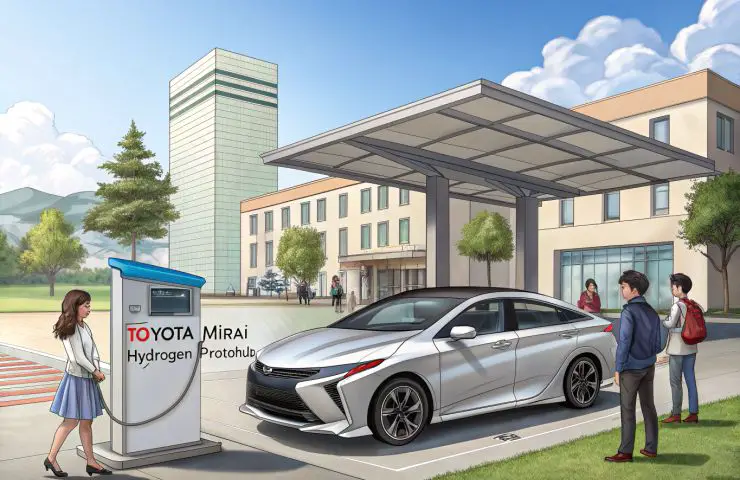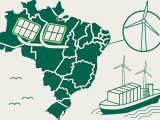
Hydrogen Fuel Cells Drive UT Austin’s Toyota Mirai Ride-Share Program
October 28, 2025UT Austin’s Center for Electromechanics has kicked off a hydrogen-powered ride-share on the J.J. Pickle Research Campus. Thanks to the Hydrogen ProtoHub, students and faculty snag a second-gen Toyota Mirai fuel cell electric vehicle and top off at Texas’s only public hydrogen dispenser—for free. It’s the brainchild of director Mike Lewis and coordinator Elizabeth Adams, who are all about hands-on with hydrogen fuel cells, beefing up workforce skills, and collecting real data to steer future investments in hydrogen infrastructure and optimize hydrogen production statewide. Marrying top-tier research with everyday driving, this program tackles climate and air quality goals head-on while grooming the next wave of clean-energy pros.
Behind the Center
If you’re curious where all this hydrogen magic is happening, look no further than the UT Center for Electromechanics at UT Austin’s Cockrell School of Engineering. It’s the go-to spot for folks obsessed with alternative fuels, renewable energy, and beefy high-power systems. At its heart is the Hydrogen ProtoHub—a hands-on playground where the team demos everything from hydrogen production using advanced electrolysis to high-pressure storage and campus fueling. Forget dusty journals: CEM thrives on real-world proof-of-concepts, from portable power units to hydrogen vehicle showcases. The ride-share program is simply the next step in turning lab-based theory into the kind of everyday experience that makes sustainable energy feel… well, normal.
Toyota Mirai’s Next Chapter
Remember when the Toyota Mirai rolled in as one of the first rides powered by hydrogen fuel cells you could actually buy? It’s come a long way since those early ’90s lab models. The second-gen Mirai, unleashed in 2020, tacks on extra range, faster fill-ups, and a smoother, more confident chassis. Toyota teamed up with UT to put these cars through their paces beyond California’s well-oiled hydrogen scene. The result? A real-world showcase of zero-emission technology proving it can tackle different terrains and climates—delivering clean, reliable mobility to drivers here in Texas.
A Brief Historical Drive
You’ll find the roots of fuel cell vehicles back in the 1990s, when labs in Japan and California started tinkering with H₂ prototypes. California’s first hydrogen stations doubled as living labs, and Japan threw government cash at HySUT to keep things rolling. But widespread infrastructure didn’t really catch on until the feds rolled out hydrogen hub grants. Texas, unsurprisingly, was slower to jump in. That’s where UT Austin’s program comes in—plugging a vital gap by logging how people fill up and drive, laying down the data tracks to inform policies and springboard future stations across the state.
Putting Hydrogen in Students’ Hands
This ride-share isn’t only about getting from A to B—it’s a hands-on masterclass. Engineering, environmental science, and business students all get behind the wheel of a Mirai to see hydrogen fuel cells in action, learn the ins and outs of fueling protocols, and gauge real-world performance. Cruising campus roads or navigating Austin streets, they build confidence with pressure vessels, nail safety checklists, and pick up the fine points of hydrogen storage. In other words, they’re stacking must-have skills for the booming clean-energy job market.
Program Logistics
Ready to roll? UT affiliates 21 or older just need to knock out the campus driving safety course. Then, shoot an email to Elizabeth Adams to lock in your slot and go over safety briefings. You can borrow a Mirai for up to a full day, and CEM covers insurance and maintenance—so your only mission is soaking up the fuel cell experience. Before you hit the road, you’ll get a quick tutorial on fueling steps and emergency drills. Oh, and did we mention it’s totally free? That means more people can jump in and get hands-on with zero-emission technology.
Infra on Campus – Hydrogen ProtoHub
At the core of the action sits the Hydrogen ProtoHub, where hydrogen comes to life through cutting-edge electrolysis. The team crams that gas into high-pressure tanks, then lets you watch it flow out at the dispenser. Lab work doesn’t stop there—researchers push electrolyzers to their limits, experiment with tank materials, and fine-tune refueling speeds. They even dabble in stationary uses, like backup generators and microgrids. By mashing production and dispensing under one roof, ProtoHub pulls back the curtain on every step of the hydrogen supply chain. Drivers and students get front-row seats to safety checks, pressure gauges, and dispenser tweaks—real-world lessons in building out robust hydrogen infrastructure.
Data Insights
Every spin in a Mirai spits out a trove of intel—how long you spend refilling, miles racked up, kWh efficiency, and candid driver reactions on ride and handling. That data gets crunched to spot trends: when folks fuel up most, how range shifts between city streets and highways, and who feels comfy behind the wheel. The goal? Use these nuggets to map ideal station spots, size up dispenser throughput, and shape user training. By putting numbers on paper, UT Austin hands stakeholders a solid blueprint for scaling hydrogen production and distribution networks in Texas—and beyond.
From Campus to Statewide Impact
Although this pilot zeroes in on passenger cars, the ripples hit freight and heavy-duty rigs too. Energy companies, transit agencies, and logistics players swing by ProtoHub to size up hydrogen’s chops for decarbonizing trucks and buses. Given Texas’s sprawling ports and distribution hubs, cleaner fuels aren’t just nice—they’re a must. The real-world insights from UT can steer incentive programs, fast-track station permits, and shape training curricula. By giving folks a hands-on glimpse, this initiative paves the way for a sturdier sustainable energy landscape across the Lone Star State.
A Model for Industry Collaboration
This ride-share is proof that when academia and industry team up, magic happens. Toyota gets hyper-local performance feedback on the Mirai, while UT’s students and professors tap into state-of-the-art vehicles and fueling gear. These partnerships spawn research fellowships, internship pipelines, and juicy knowledge-transfer opportunities. As carmakers race to polish the next wave of fuel cell technology, having a live Texas test bed delivers the kind of real-world feedback that turbocharges product development and strengthens local hydrogen infrastructure and supply chains.
Learning on the Road
Data’s great, but the real gold? Those Aha! moments you can’t chart on a spreadsheet. Engineering students walk away with a newfound respect for safety checklists, pressure balancing, and system diagnostics. Business majors snag live case studies on user adoption roadblocks, while technicians sharpen their troubleshooting chops when fueling hiccups pop up. In this ride-share, every quiet, zero-emission trip doubles as a rolling classroom—reinforcing clean mobility principles and lighting the fuse for new research ideas.
Why It Matters
At its core, beefing up hydrogen infrastructure gives Texas a fresh decarbonization playbook. Wrapping hydrogen production, storage, and vehicle ops into a live-action lab doesn’t just speed up workforce readiness—it also boosts public buy-in and fine-tunes policy decisions. Hands-on experiences like these chip away at knowledge gaps, sharpen technical skills, and build trust. In doing so, they tie state-level ambitions to broader national goals of slashing emissions and crafting a resilient, sustainable energy ecosystem.
Next Steps
On the horizon, UT will roll out peer-reviewed studies and stage workshops for industry and government players. They’re eyeing a bigger Mirai fleet, test-driving heavy-duty rigs, and lining up more funding for regional station rollouts. As the data bank grows, the dream is to spark fresh public-private ventures—turning Texas from a latecomer into a top dog in hydrogen infrastructure, one fuel cell-fueled mile after another.


 With over 15 years of reporting hydrogen news, we are your premier source for the latest updates and insights in hydrogen and renewable energy.
With over 15 years of reporting hydrogen news, we are your premier source for the latest updates and insights in hydrogen and renewable energy.